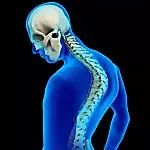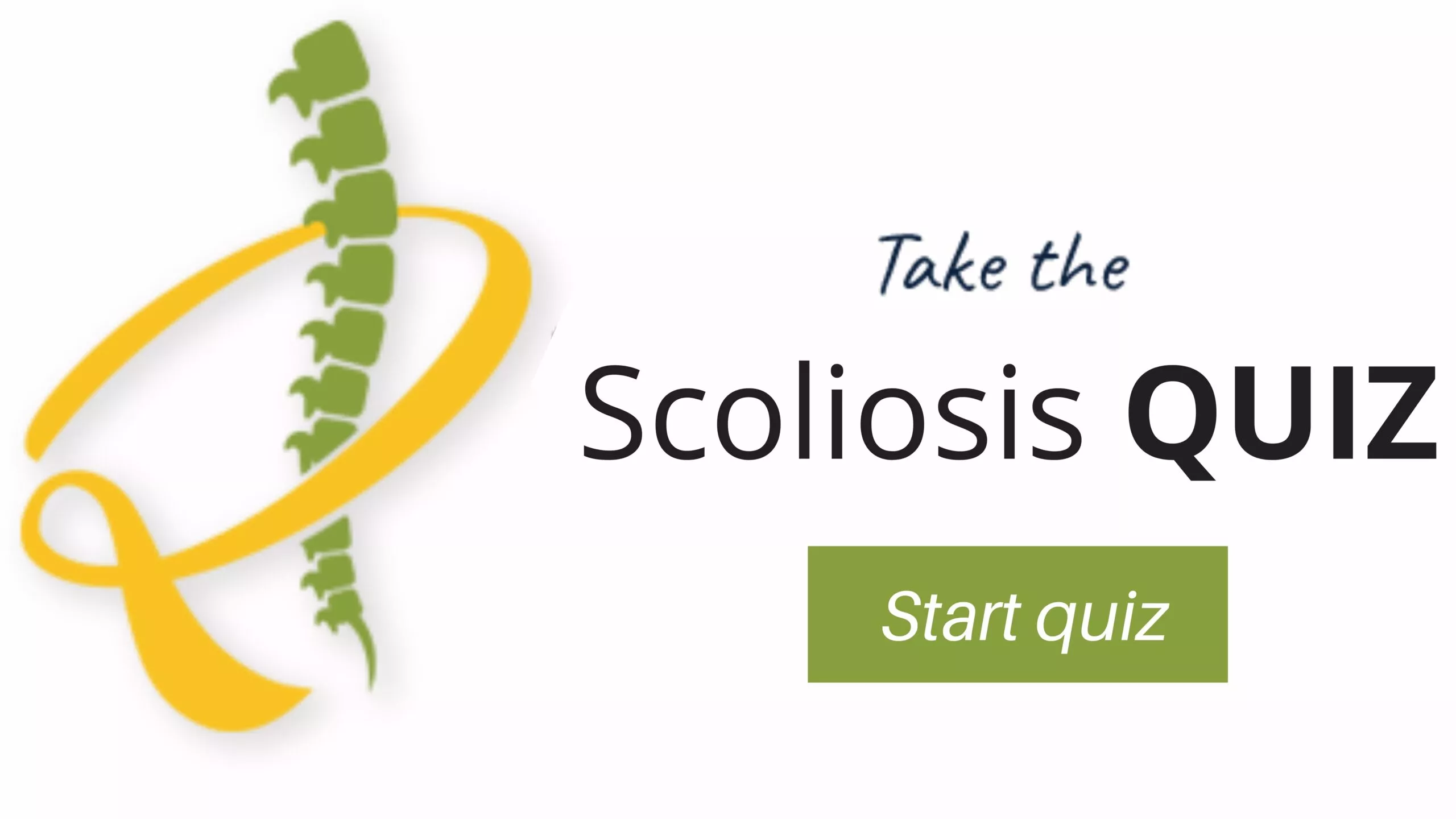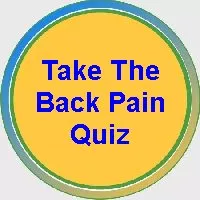The Doctors, Surgeons, Physician Assistants, Technicians, and Staff at the Southwest Scoliosis and Spine Institute are among the very finest in the world
Scheuermann’s Kyphosis
Scheuermann’s kyphosis, a “developmental” type of kyphosis, means that the condition happens during a person’s growth cycle. This disease develops in about one percent of adolescents while their bones continue to grow and becomes recognized when the front of the vertebrae wedge closer together in a triangular shape — causing the spine to curve forward more than normal. This condition affects an equal number of boys and girls. On the other hand, normal vertebrae are rectangular in shape and stack on top of one another like building blocks, with a soft cushion between each one.
Learn about Scheuermann’s Kyphosis including:
- How the thoracic spine gets a curve?
- What causes the condition?
- The symptoms
- How diagnoses the condition
- The treatment options
Questions and Answers
Can Scheuermann's Kyphosis be fixed?
Yes, Our doctors can treat and manage Scheuermann’s Kyphosis. Mild cases may improve with physical therapy. In more severe cases, doctors may recommend surgery to correct the curvature and stabilize the spine. Our doctors can provide specific recommendations based on individual circumstances.
What are the Symptoms of Scheuermann's Kyphosis?
The most common symptom of Scheuermann’s Kyphosis is the noticeable rounding of the upper back. Other symptoms may include back pain, stiffness, and fatigue. In severe cases, the curvature can restrict lung capacity and cause breathing difficulties. Some individuals may also experience self-consciousness or body image concerns due to visible deformity.
How is Scheuermann's Kyphosis Diagnosed and Treated?
Doctors diagnose Scheuermann’s Kyphosis through a combination of medical history evaluation, physical examination, and diagnostic imaging. X-rays or other imaging tests can help determine the extent of the curvature and assess the wedging of the vertebrae.
The treatment of Scheuermann’s Kyphosis depends on the severity of the condition and individual factors. The following approaches are commonly used:
-
-
- Observation: Mild cases may only require regular monitoring to ensure the curvature does not worsen.
- Physical Therapy: Exercises and stretches can help improve posture, strengthen the back muscles, and increase flexibility.
- Bracing: In some cases, wearing a back brace may be recommended, especially for adolescents with significant curvature progression.
- Pain Management: Pain medication or other pain management techniques may be prescribed to alleviate discomfort.
- Surgery: Doctors consider Surgical intervention for severe or progressive cases that do not respond to conservative treatments. Surgeons may use spinal fusion to correct the curvature and stabilize the spine.
-
People who suffer from this condition should consult with doctors and surgeons who specialize in spinal conditions for an accurate diagnosis and to discuss the most appropriate treatment options based on individual circumstances.
Anatomy of Kyphosis
In order to understand your symptoms and treatment choices, it helps to start with a basic understanding of the anatomy of the mid-back. Become familiar with the various parts that make up the thoracic spine and how they work together.
Learn more about the anatomy of the thoracic spine

Scheuermann’s kyphosis
The normal spine has three natural curves. The cervical spine curves slightly inward, the thoracic slightly outward, and the lumbar slightly inward. This shape provides an even distribution of weight and helps the spine withstand all kinds of forces. Even though the lower portion of the spine holds most of the body’s weight, each segment relies upon the strength of the others to function properly.
Kyphosis refers to the natural shape of the thoracic spine, which usually maintains a forward curve of 20 to 40 degrees. This rounded shape is a normal kyphosis, a “C” curve, with the opening of the C in the front. If this curve is more than 40 to 45 degrees, doctors consider it abnormal or a spinal deformity. Also, sometimes this deformity is known as “round-back posture” or “hunchback.”
With Scheuermann’s kyphosis, the thoracic curve is usually 45 to 75 degrees. Patients will experience vertebral wedging greater than five degrees with three or more vertebrae in a row. The affected vertebrae display a triangular appearance. They wedge forward, which reduces the space between them. The thoracic spine angles forward into more kyphosis.
Other Abnormalities
There are typically other abnormalities in the affected vertebrae. Schmorl’s nodes are areas where the disc (cushion) between each affected vertebra pushes through the bone surface at the bottom and the top (endplates) of the vertebra. Ligaments are the structures that help connect bones to bones, including vertebrae. Patients with Scheuermann’s kyphosis commonly display a thickening in the ligament running along the front of the spine (the anterior longitudinal ligament). Some spine specialists believe that the tightness of this ligament may possibly cause spinal deformity. The thickened ligament may affect the growth of one or more vertebrae during childhood. This leads to more growth on the back of the vertebrae and less in the front, resulting in one or more wedged vertebrae.
Causes of Scheuermann’s Kyphosis
The cause of Scheuermann’s kyphosis remains unknown, but there are many possible theories about its development. Scheuermann, a Danish radiologist, proposed that the problem started because the cartilage of the spinal bone’s ring died from a lack of blood supply. Additional theories postulate that a vertebral disorder during the rapid growth spurts of adolescence causes abnormal bone growth, producing wedging of the vertebrae, which eventually leads to problems of kyphosis. Many spine specialists also suspect that a problem with the mechanics of the spine (the way it is put together and functions) plays a part in Scheuermann’s kyphosis. Others suggest mild osteoporosis could contribute to the deformity. In addition, most researchers think that some sort of damage to the growth area of the vertebrae starts the process.
Muscle abnormalities are considered one of the possible causes. And researchers report seeing a high genetic predisposition to this disease (runs in families). Scheuermann originally noticed this spinal deformity in agriculture workers who were frequently hunched or bent over. This of course led to the question of whether poor posture could lead to kyphosis. While this is a logical question, there is no confirmation of the connection between posture and this deformity in science. However, poor posture plays a vital role in making the problem worse. Therefore, correcting postural problems can sometimes help improve excessive kyphosis.
Scheuermann’s Kyphosis Symptoms
Symptoms of Scheuermann’s kyphosis generally develop around puberty, between the ages of 10 and 15. It’s hard to determine when the problem begins because X-rays don’t show the changes until the child turns 10 or 11. When parents notice the onset of poor posture or slouching, in their child, doctors can address the problem. The child might experience pain and fatigue in the mid-back. The pain rarely becomes disabling or severe at this point unless the deformity appears severe.
Generally, excessive kyphosis slowly develops. When it progresses to the point the rounded curve becomes noticeable, a concerned parent or teacher will suggest a doctor’s visit. This is what leads most children to get medical help — not the presence of pain. By comparison, adults who get Scheuermann’s early in life tend to seek help. This is because the pain from the deformity becomes unbearable.
A rigid curve in the spine is common with Scheuermann’s kyphosis. The curve gets worse with bending over and only partially corrects when standing up straight. Pain typically increases with time and the severity of the deformity. About one-third of the patiens with Scheuermann’s kyphosis also have scoliosis.
Scoliosis is another type of spinal deformity that usually occurs in teenagers. Looking at an X-ray from the front, scoliosis curves side to side, like an “S” rather than a straight line. Learn more about adolescent idiopathic scoliosis. People who have Scheuermann’s kyphosis usually don’t have nerve problems from spinal deformity. However, a severely rounded spine can squeeze the contents of the chest and abdomen. The disorder may eventually put pressure on the heart, lungs, and abdomen. This can mean chest pain, shortness of breath, and a loss of appetite.
Diagnosis
History and Physical Exam
When you visit the doctor, you must tell your medical history on an initial basis. After taking a history, the physician will give you a physical exam. This helps the doctor to rule out possible causes of kyphosis, including Scheuermann’s kyphosis, and to try to determine the cause of the spinal abnormality.
Diagnostic Tests
The doctor will take an X-ray of the spine probably. The extra kyphosis will show up on the X-ray and it is measurable in degrees. If the problem is simply due to postural problems, nothing else abnormal will show up on the X-ray. But if the kyphosis is due to Scheuermann’s disease, the X-ray will show three or more adjacent wedged vertebrae at least five degrees each. In addition, the X-ray will show if there are Schmorl’s nodes (the small herniations of the disc through the endplates of the vertebrae). Arthritis may show up on X-rays in adults with extrathoracic kyphosis. These changes generally coincide with an increase in pain.
Treatment Options
Treatment of Scheuermann’s kyphosis is somewhat controversial. It depends on many things such as your age, the severity of the curve, and the flexibility of the curve.
Bracing
If possible, doctors will treat abnormality without surgery. As such, they recommend bracing. Bracing will guide the growth of the vertebrae, and thus, help to straighten the spine. The brace will only successfully straighten the spine in individuals who continue to growing. The brace helps to hold the spine in a straighter and upright posture. This will take pressure off the front half of the vertebra, allowing the growth of the bone in the front to catch up with the growth in the back. A brace helps senior patients support the spine and relieve pain, but it will not improve the curve.
There are many braces available that keep the shoulders pulled back and the chin upright. Braces provide effective treatment for adolescents with curves of less than 75 degrees. If young people feel comfortable wearing the brace, they can limit the curve from getting worse. Sometimes a correction to the deformity occurs within two years. The brace allows remodeling and corrected the growth of the developing spine. Doctors recommend that patients wear the brace from 16 to 24 hours each day for one year, then just at night for two years.
Physical Therapy
The doctor may prescribe physical therapy. A well-rounded rehabilitation program assists in calming pain and inflammation, improving mobility and strength, and making daily activities easier. When people include physical therapy along with wearing a brace, they will see improvements.
It appears that exercise helps in changing the kyphotic curve in the mid-back. However, it can help when you combine it with bracing. Kyphosis treatments address the flexibility of the low back and hamstring muscles, back strength and posture, and ways to exercise at home. People might require rechecks with the physical therapist once or twice each year during periods of growth.
The goals of physical therapy will help:
- learn correct posture and body movements to counteract the effects of kyphosis.
- maximize the range of motion and strength.
- foster aerobic fitness.
- learn ways to manage your condition.
Learn more about spinal rehabilitation
Scheuermann’s Kyphosis Surgery
Medical experts recommend surgery if X-rays show a kyphosis over 75 degrees. Use a brace or get medical observation to treat a curve less than 75 degrees. In many cases, doctors will perform surgery for certain cosmetic reasons. As the Scheuermann’s Kyphosis surgery involves the spine, improving appearance does not justify the procedure.
Fusion surgery assists in correcting Scheuermann’s kyphosis. The operation has two parts. One operation is carried out on the front of the spine (anterior) and another one on the back (posterior). These two surgeries are carried out at a gap of one week. Many doctors are doing both operations on the same day.
The anterior operation is usually carried out to “release” tight ligaments along the front of the spine. Cutting these ligaments and removing the discs between the vertebrae increases flexibility in the spine. This helps in straightening the spine easily when rods are put in from the back of the spine. Next, the surgeon begins the posterior procedure by working from the back of the spine. This is where the actual correction of the spinal curve happens. Additionally, the rods are attached along the spine to align the spine and hold the spine in its correct position.
Types of Kyphosis Surgery
Most of the surgeries for correcting kyphosis involve a rigid spine. And, both anterior and posterior procedures are generally required. There are some cases of kyphosis that doctors can correct with the help of a posterior procedure alone. In fact, some surgeons are performing posterior-only surgery for Scheuermann’s kyphosis regardless of the size of the curve.
For many patients, the posterior procedure will realign the spine. The doctor will advise which type of surgery will be used in order to produce the best results. The use of a surgical approach will depend upon the patient’s age, spine flexibility, the location and degree of the curve, and whether pressure affects the nerve roots.
Why Choose Southwest Scoliosis and Spine Specialists
Our Doctors specialize in Orthopedics at the Southwest Scoliosis and Spine Institute. They understand your concerns, can answer your questions regarding your condition, and know how to use their specialized knowledge to assist you. Doctors Richard Hostin, MD, Devesh Ramnath, MD, Ishaq Syed, MD, Shyam Kishan, MD, and Kathryn Wiesman, MD, have many years of training and experience in Spine and Back Pain for kids, adolescents, young adults, and seniors and can help people of all ages get back to living the life they love.
The following comprise a few of the many reasons why patients might choose the Southwest Scoliosis and Spine Institute.
- Expertise in the spine: The team of specialists at Southwest Scoliosis and Spine Institute consistently provides the expertise and knowledge to be highly recognized by their peers as the very best. They specialize in the diagnosis and treatment of spinal conditions, ensuring the best possible care for their patients.
- Cutting-edge technology: Our practice uses the latest technology and techniques to diagnose and treat a wide range of conditions. In addition, we use minimally invasive procedures that reduce pain and promote faster recovery.
- Comprehensive care: Our practice offers a full range of services, from diagnostic imaging and physical therapy to surgery. We ensure that patients receive complete, seamless care for their spinal conditions.
- Dedicated facilities: Southwest Scoliosis and Spine Institute doctors, surgeons, physician assistants, technicians, nurses and staff dedicate their lives to providing patients with the finest medical care available.
Finally, our board-certified physicians and fellowship-trained orthopedic surgeons use the full range of treatments to treat their spine patients. Southwest Scoliosis and Spine Institute’s experts with offices in Dallas, Plano, and Frisco, Texas offer cutting-edge technology, comprehensive care, and dedicated facilities to ensure the best possible care for their patients. Get in touch with us today at (214) 556-0555 to schedule an appointment.
____________________
National Library of Medicine: Scheuermann’s Kyphosis
If you or a loved one suffers from spinal pain, you owe it to yourself to call Southwest Scoliosis and Spine Institute at 214-556-0555 to make an appointment.


